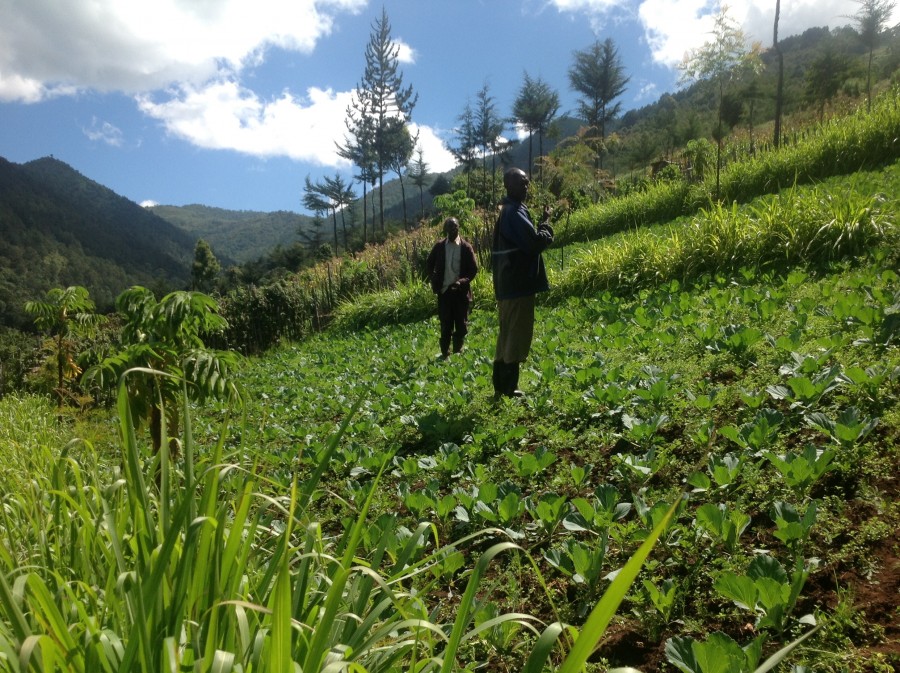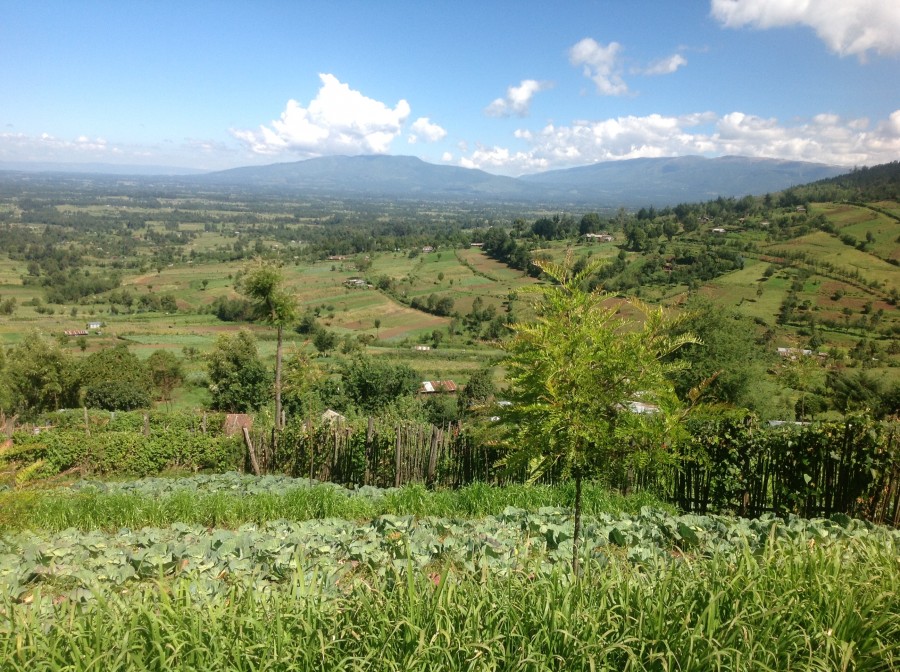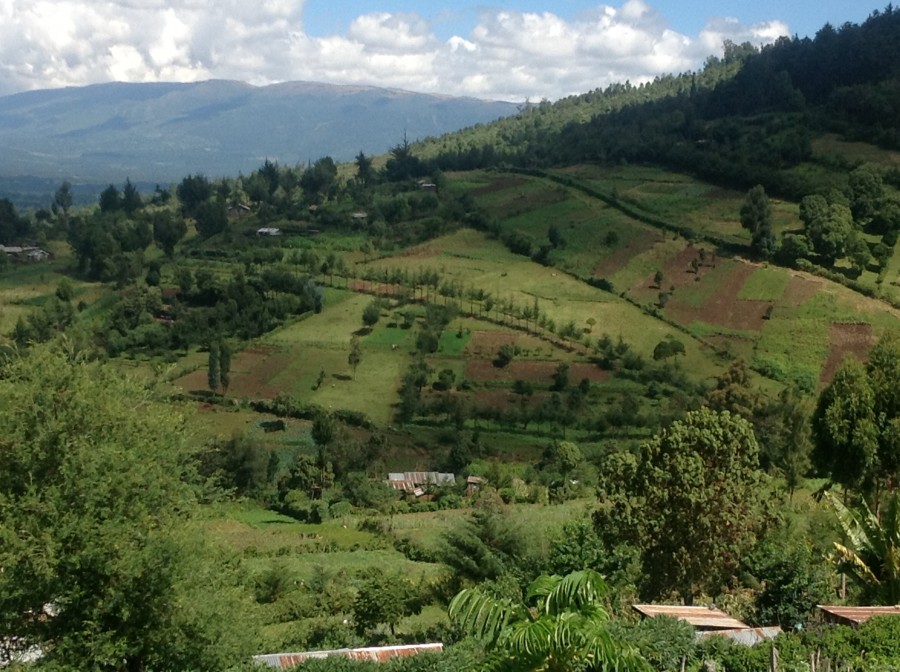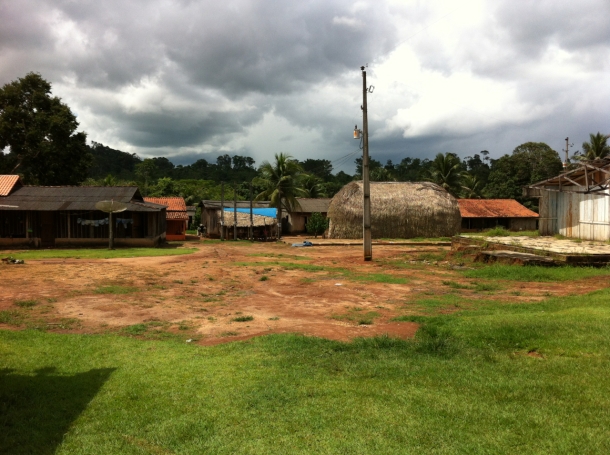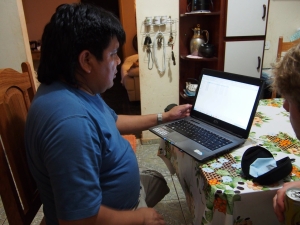Since environmental services’ emergence as a concept in 1997, there have been many efforts to internalize the idea and transform theory into practice. Here, we look at the concept’s evolution into public policy in Mexico where academic literature plays a role in environmental issues and developing countries’ need for the right tools is realized.
This article was originally published on the Solutions website. Click here to read the original.
“Remember that all models are wrong;
the practical question is how wrong do they have to be to not be useful.”
George E. P. Box and Norman Richard Draper,
Empirical Model-Building and Response Surfaces
24 April 2013 | Historically recognized for its natural beauty, Mexico is one of only 12 mega-biodiverse countries in the world. Its immense land area abounds with countless species of flora and fauna. Numerous mountain ranges traverse its landscape, quenching rural and urban areas’ thirst for precious water. With its prime location on the cusp of both the nearctic and neotropical ecozones, essentially a bridge between North America and Central America, Mexico boasts both orographic and geological complexity. From its deserts to its tropical forest, from its pine-covered and snow-peaked mountains to its virgin beaches and colorful coral reefs, from coast to coast and border to border, Mexico’s biodiversity is complemented by its cultural diversity, including many indigenous groups. As a result, no two cities have the same climate or water supply, the forests are very heterogeneous, and there is a notable absence of grand extensions of uniform landscapes of monoculture. Mexico’s natural and cultural diversity have propelled tourism into its place as one of the important and productive industries for the national economy.
Mexico’s total land area covers 196 million hectares, of which approximately 70 percent is covered by one type of forest ecosystem or another. The remaining 30 percent is dedicated to agricultural production, livestock, and urban areas. But the country is developing quickly; with nearly 112 million inhabitants, it ranks as the 10th most populous country in the world. Upon learning that Mexico boasts an indigenous population of more than 10 million and more than 62 spoken languages, many presume that the distribution of Mexico’s population will continue to be toward rural areas, but this is not the case. Mexico is experiencing significant levels of urbanization and migration to urban areas.
These changes are affecting Mexico’s way of life. Approximately 60 percent of Mexican forests and jungles are owned by communities and ejidos, or organized groups of peasants in an institutional arrangement that involves both individual plots of land and common property areas. Around 3,000 communities harvest forest resources or participate in some kind of forestry activities. Many of these communities are indigenous and located in or around biodiversity hotspots. It is estimated that about one quarter of the total water collected at the national level is in the headwaters of the watersheds located precisely in these same locations.
Yet every year Mexico’s environmental riches are being depleted at a faster rate than the last. It is now widely accepted that the Mexican water systems have been deteriorating as a result of irresponsible consumption, pollution, reduced water levels, and the obstruction of waterways with silt or mud. An estimated 40 million people rely on overexploited aquifers, and drinking water supplies are growing increasingly dependent on groundwater extraction, representing a clear threat to Mexico’s sustainability, according to a report by the National Forestry Commission. Threatened water availability and increased forest degradation have pushed the topic of ecosystem services to the forefront in Mexico.
However, this trend could be reversed by implementing a system in which society recognizes, and assumes responsibility for preserving, the ecosystems that provide crucial environmental services. In this paper, we present the story behind Mexico’s federal forest conservation program based on payment for environmental services. The details of the program serve as an example and resource for future programs to be implemented in other countries.
The Beginning: From the Lecture Halls of Academia to the Halls of Congress
Environmental services as we know them today are the natural processes found in ecosystems that maintain life on the planet, benefiting all human beings. Despite what many now agree is our economy’s serious dependence on these services, for decades they were considered market externalities and were consequently left out of the public policy debate.
One of the efforts to quantify environmental services and bring them into the markets was based on the concept of payment for environmental services, or PES. This concept involves the design of payment plans that have users of environmental services compensate landowners for the environmental services produced on their land. These transactions finance and help to promote specific land management practices that increase ecosystems’ service capacity and contribute to communities’ economic development, thus improving their quality of life. Payments for environmental services are voluntary and are made for specific environmental services or for a type of land use that produces said services.
Mexico did not make headway on its PES program until about 10 years ago. At that time, a very successful PES program had already been negotiated between 1990 and 1993 in New York City, and academic publications began to consolidate the concept and highlight the economic importance of the services provided by the natural environment. Then, in 1997, Costa Rica made headlines with its country-wide PES success story. It was during this period that the two concepts—natural capital and valuation of environmental services—merged and academic institutions found the tenacity to boldly surf the wave. Mexico made its mark during the three-year period from 2000 to 2003, drafting and negotiating a national PES program. Ultimately, the negotiators achieved consensus and an institutional agreement known as the Payment for Hydrological Services Program (PSAH, by its acronym in Spanish) was born.
There is no debate about whether or not this program significantly changed the paradigm in Mexico. Because of its innovative approach, it faced an uphill battle as it met with resistance from the forestry and water sectors. Despite these challenges, the groundbreaking and against-the-grain nature of the program probably contributed greatly to its success.
By 2008 the PES approach had spread quickly throughout the world, 123 cases had been documented with more than half of them in Latin America13 and a large majority of them in developing countries. This rapid spread may be attributed to the relevance and utility of PES for these countries, as had been predicted much earlier.
What undoubtedly made and continues to make the PES concept so attractive is that it opens doors for local stakeholders, international agencies, and sectors of government to establish frameworks that articulate ecosystem services in a way that includes market alternatives. In the case of Mexico there are city governments (such as Xalapa and Coatepec) and state governments (Estado de México, for example) as well as socially responsible enterprises (one of which is a large construction company specializing in communications infrastructure) that have adopted new attitudes toward their water consumption. These entities now recognize that the water they consume depends on upper watershed conditions, motivating them to take the initiative and pay for such environmental services. Such frameworks have inspired scientific literature geared toward establishing norms and clarifying conceptual components, terminology, and application criteria, according to a report on Ecosystem Services Strategy by Albert Appleton.
The public policy process involves a number of hurdles:
- Academics need to meet the Research Excellence Framework (REF) criteria while government officials are focused on obtaining the latest and best evidence to improve the impact of public policy.
- The public policy context is constantly changing and evolving, which can make it difficult to produce timely and relevant research outputs.
- Research outputs are often too theoretical in nature and not tailored for use in policy making.
The Mexican PES Model
There are varying degrees of deforestation and forest degradation in Mexico. According to the Food and Agriculture Organization of the United Nations (FAO), approximately 155,000 hectares per year were lost between 2005 and 2010. Although the FAO study shows that deforestation rates have dropped in the last decade, certain regions suffer very high rates of deforestation and forest degradation continues to be a serious problem in a large part of the country.
In Mexico, changes in land use have led to increased deforestation and ecosystem degradation and reduced environmental service production. In light of such dire circumstances, the idea of economic incentives aimed at compensating owners of forested land for their responsible land management and conservation activities would appeal to any stakeholder interested in the environment. By the year 2000, the trend toward depletion of forest resources was evident, there was a general consensus about the causes of it, and the rural population was motivated to do something about it. These three conditions set the stage for the introduction of a PES framework.
Mexico joined the PES movement in 2003 and initiated PSAH. The program is a federal mandate set forth as a reform to the Federal Rights Act. Mexico’s approach is very innovative in that it mandates payment for the use and application of the national water supply and it lays out specific guidelines for the allocation of funds collected by the PSAH program. These guidelines obligate the government to put in place administrative mechanisms for compliance and, most importantly, put in place a policy tool to ensure that forests’ landowners are compensated for the environmental services that they provide to society. The program, managed by Mexico’s National Forestry Commission (CONAFOR), is based on financial compensations for owners of forestlands in order to maintain certain ecosystem conditions that favor environmental service production. In addition, a contractual relationship is formed between the forest owner and the government, the latter assuming the role of the buyer of the environmental service.
Following the design process, the program began operating to address deforestation in areas with limited water supply where forestry activities would be unable to compete with agricultural and livestock activities, which would imply a land-use change.
PSAH was inspired by the Costa Rican model and, at the beginning, was based on forest services and paying land owners not to use their ecosystems. Over the years the Mexican program has evolved to include the promotion of conservation land management practices and the restoration of forest ecosystems. More recently, the program has promoted more active management and increased participation of environmental service users. However, in order to stay focused on forests, PSAH does not provide for environmental services generated in complex landscapes with natural and managed ecosystems and therefore limits the amount of attention that can be given to the whole landscape.
Stages, Failures, Limits, and Society’s Participation
Three main stages stand out in the evolution of PSAH:
- Gestation. In this phase, a group of academics, some from within the government and others from numerous universities, proposed, designed, and promoted the program. At that time, the forest strategy was incomplete. It focused exclusively on forests with high commercial value but neglected very well-preserved forests that had little or no commercial value.
- Institutionalization and maturation. The model went through a second stage during which the implementation of PSAH in 2003 was followed by the incorporation of other environmental services such as carbon sequestration and biodiversity. In 2006 the Mexican government obtained international financing (a loan from the World Bank and a grant from the Global Environment Facility) that built up its financial and operational capacity. In that same year, the Program Technical Advisory Committee was integrated into the system in order to advise CONAFOR on the implementation of PES frameworks. Then, in 2007, the program received a huge influx of capital as its budget was increased from US$18 million to nearly US$100 million.
- Adjustments and expansion. The past ten years have been good to PSAH and it has entered a third stage of development. The program has a national perspective, which has clearly been positive but has limited the focused attention on regions that are a priority for the provision of environmental services. While the program does have targeting criteria, the total eligible land area is so large that it results in scattered payments and varying impact payments for the maintenance of these services, with the exception of natural protected areas. Indeed, the allocation criteria have influenced the targeting of payments in some areas, primarily natural protected areas, where 61 percent of the program’s budget is designated. In addition, if we were to critique the program, we might point out that payments for non-use of resources alongside weak social capital may discourage local development processes.
In response to the diverse feedback given and received during this third stage, CONAFOR has strengthened PSAH and has developed two complementary strategies adapted to fit the varying landscape: (1) create a long-term funding program for the conservation of forest ecosystems that are globally significant because of their biodiversity, and (2) create local PES mechanisms through matching-funds to support institutional arrangements aimed at transferring resources from real users to the owners of the land where the services are produced.
A Metaphor for the Mexican Model
One could say that the Mexican PES model is representative of a 4×4 off-road vehicle. Years were spent working to improve the design and tailor it to the Mexican context. A lengthy trial-and-error process led to the vehicle’s current condition, modified to move efficiently in a geographically complex environment with unique land tenure conditions. The vehicle works well in the Mexican reality, which consists of diverse ecosystems, the existence of ejidos, variable means of production tied to the use of natural resources, the presence or absence of local institutions, and multiple levels of community organization.
As a result, the model itself is not necessarily replicable in other countries that, like Mexico, face challenges in maintaining environmental services. However the model does possess certain components and processes that, if tailored to each country’s context, can provide solutions to the design and implementation of natural resource management and rural development public policy. These components include: a legal framework in place, financial mechanisms that allow for multi-year projects, operational rules that allow for transparency and accountability, contractual relationships between the government and owners of forested land, solid institutions, diverse funding sources, and platforms dedicated exclusively to increasing stakeholder participation.
One aspect of the Mexican model that we can offer to the world and that we consider the most replicable is the program’s prioritization of local and regional processes. Let’s say that the expansion or the stage of growth has been defined by a kind of fractal replication from the national to the local level. Local and regional stakeholders and their agreements boast the same components as the national program and they have a certain level of autonomy to address situations specific to their locality or region and to take advantage of local conditions.
The evolution of the Mexican model, illustrated by the stages described above, is the element that could allow the design of ad hoc mechanisms in different countries and regions, igniting rural economies and improving the opportunities for provision of environmental services.
The Road Ahead
Over time, there has been criticism of PSAH and much of it has contributed to the evolution of the program. Undoubtedly, some of the criticism has been accurate. For example, some have commented that the program does not address the complexity of environmental services themselves—that the program is dependent on forested polygons for conservation and therefore does not cover the whole watershed or reflect the realities of other sectors and uses beyond forestry.
There are lessons to be learned among these criticisms (such as the 29 recommendations to be considered in the design of future initiatives), which show that the heart of PES is the clarity of the rules of the game and the strength of the institutional structure needed to apply them.
Faced with such an intricate situation, we predict the following:
- The program will continue to be an option, especially for priority regions where there is no direct user available to get involved in the maintenance and improvement of environmental services (and where public and global interest may eventually be granted).
- In order to create local PES mechanisms focused on hydrological service, it is important to recognize that just over 40 percent of the country’s entire population is concentrated in 74 urban areas, where approximately 50 percent of the GDP is produced. In other words, these urban areas possess the greatest capacity to pay, as is the case with New York City. If we are to create these local mechanisms we need to (a) establish a legal framework for a permanent collection system linked to the user, (b) set up mechanisms that involve the agriculture and business sectors, (c) develop institutional synergies (agriculture, livestock, tourism, urban development) that facilitate the operation of programs with common objectives and harmonized operation rules, and (d) build the capacity of local stakeholders.
The expectation is that the diffusion and replication of ad hoc mechanisms linked to large cities and based on the distinct characteristics of each watershed—the overwhelming diversity of conditions, cultures, climate, and production systems of the country— will set a true course of expansion and consolidation. Setting such a course will take us to a place where the resources of direct users are verifiably transferred via financial incentives for forest conservation, for sustainable farming and ranching, and for sustainable urban practices, involving and strengthening local stakeholders that will operate these ad hoc mechanisms.
Mexico and the resiliency of its more than 100 million inhabitants are at risk, living under a dark cloud of uncertainty in the form of climate change and deforestation. It is imperative that we develop complementary policy mechanisms that enable diverse sectors of society to find ways to participate in and assume ownership of processes that will guarantee that provision of environmental services. Federal and state policies in Mexico must respond firmly and aggressively with ecosystem restoration and conservation actions, as the very survival of such ecosystems and the whole society is at stake.
Cuauhtémoc Leí³n is a Leadership for the Environment and Development (LEAD) fellow. Paola Bauche is a LEAD fellow as well. Sergio Graf is the general coordinator on production and productivity at the National Forestry Commission in Mexico and a LEAD fellow. Sofía Cortina is the director of institutional research and public policy analysis at the National Institute of Ecology. Juan Manuel Frausto works for the Mexican Fund for the Conservation of Nature and the Forest and Watershed Conservation Program, where he is currently the director.
Additional resources


